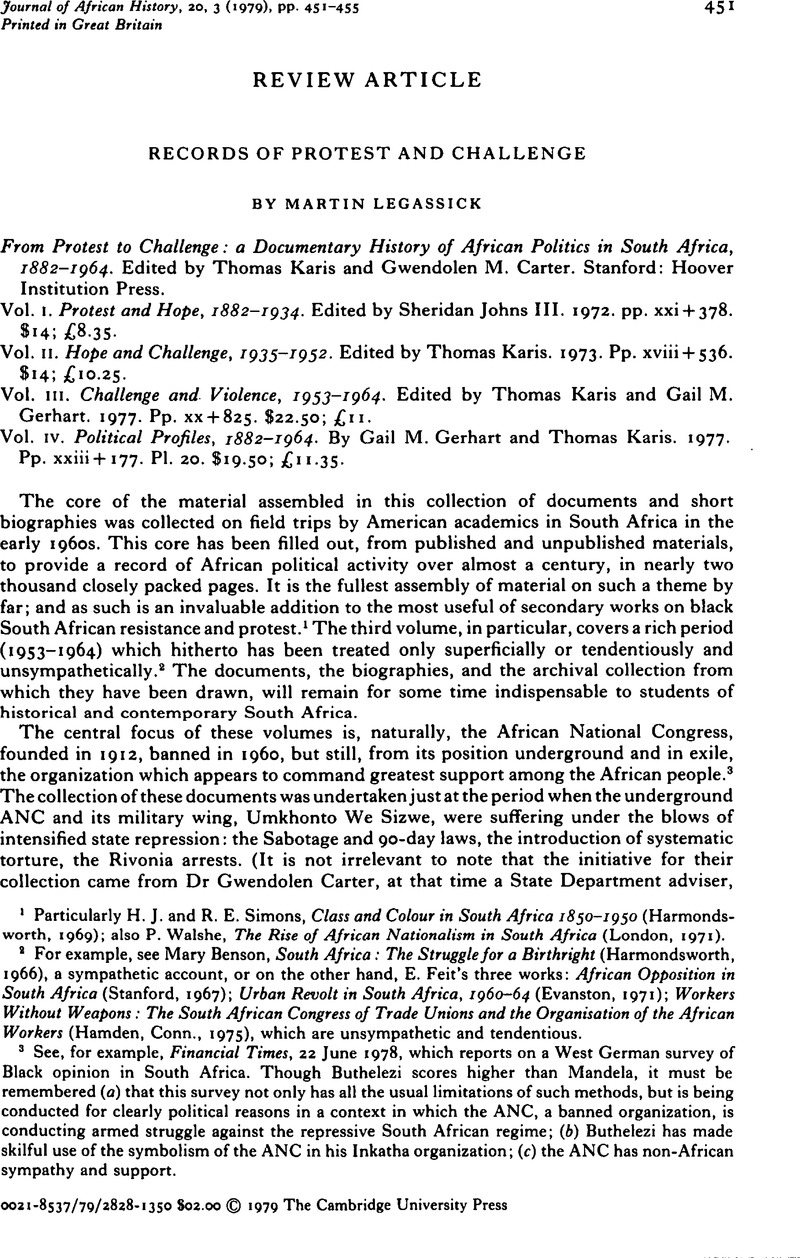No CrossRef data available.
Published online by Cambridge University Press: 22 January 2009

1 Particularly H. J., and Simons, R. E., Class and Colour in South Africa 1850–1950 (Harmondsworth, 1969)Google Scholar; also Walshe, P., The Rise of African Nationalism in South Africa (London, 1971).Google Scholar
2 For example, see Benson, Mary, South Africa: The Struggle for a Birthright (Harmondsworth, 1966Google Scholar), a sympathetic account, or on the other hand, Feit's, E. three works: African Opposition in South Africa (Stanford, 1967Google Scholar); Urban Revolt in South Africa, 1960–64 (Evanston, 1971); Workers Without Weapons: The South African Congress of Trade Unions and the Organisation of the African Workers (Hamden, Conn., 1975), which are unsympathetic and tendentious.
3 See, for example, Financial Times, 22 June 1978, which reports on a West German survey of Black opinion in South Africa. Though Buthelezi scores higher than Mandela, it must be remembered (a) that this survey not only has all the usual limitations of such methods, but is being conducted for clearly political reasons in a context in which the ANC, a banned organization, is conducting armed struggle against the repressive South African regime; (b) Buthelezi has made skilful use of the symbolism of the ANC in his Inkatha organization; (c) the ANC has non-African sympathy and support.
4 On U.S. foreign policy see Lake, Anthony, The ‘Tar Baby’ Option: American Policy towards Southern Rhodesia (New York, 1976Google Scholar) and The Kissinger Study of Southern Africa (New York, 1975); also Legassick, M., ‘Anglo-American strategy in South Africa’, Work in Progress (Johannesburg), no. 6, 1978.Google Scholar
5 Strategy and Tactics of the A.N.C. (Dar es Salaam, 1969).
6 Article by Carter, G. in Adam, H. (ed.), South Africa: Sociological Perspectives; Leo Kuper, ‘African nationalism in South Africa, 1910–1964’Google Scholar, in Wilson, M. and Thompson, L. (eds.), Oxford History of South Africa, 11 (Oxford, 1971Google Scholar); Walshe, Rise of African Nationalism.
7 E.g. Willan, Brian in African Affairs (April 1975), pp. 238–40.CrossRefGoogle Scholar
8 See Hemson, David, ‘Trade unionism and the struggle for liberation in South Africa’, Capital and Class, no. 6 (Autumn 1978).Google Scholar